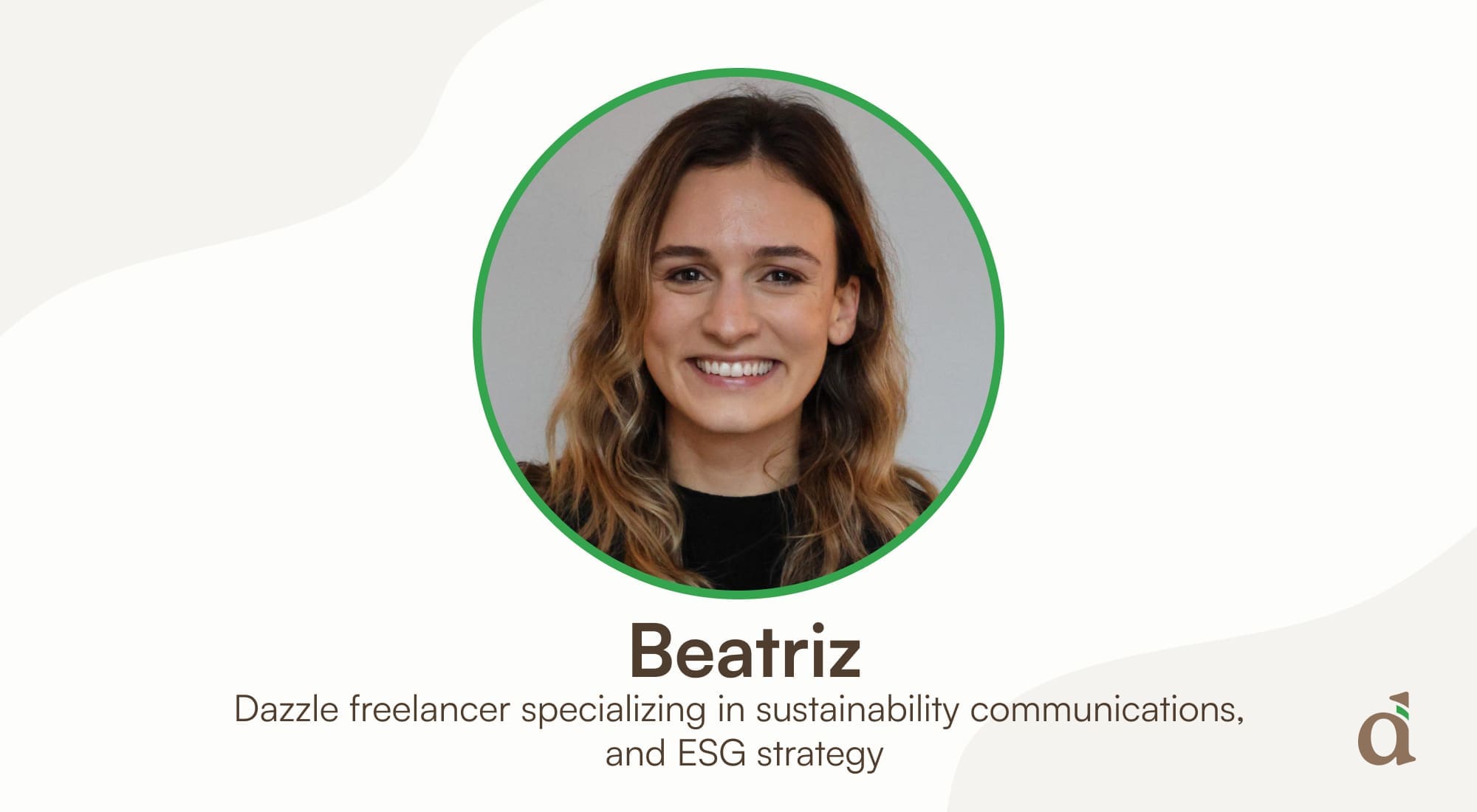About the author
Getting sustainability communication right can be tougher than it looks. I’ve seen many businesses struggle with it, either treating it as an afterthought, focusing only on glossy reports, or relying too heavily on data that doesn’t connect with people.
The result? Messages that fail to inspire, or worse, leave the door open to accusations of greenwashing.
But when done well, sustainability communication is one of the most powerful tools you have. It can sharpen your strategy, build internal momentum, and strengthen trust with stakeholders.
So in this guide, to help you get the most out of your own communications, I’ll share practical tips I’ve seen work in the real world.
1. Make sustainability communications part of your overall strategy

Sustainability communication needs to support your wider sustainability strategy, rather than becoming an add-on or something disconnected.
For example, communication moments, like the annual sustainability report, should also be used internally as opportunities to reflect: are you measuring the right indicators, and are they telling the right story?
External communication can go further still, by creating internal accountability and momentum around initiatives. Used to their fullest, these communication moments can not only share progress, but also help drive sustainability forward inside your organization.
2. Tie your narrative to real-world impacts

Your sustainability narrative — the story of what your organization does and how it contributes positively to the world — should always be tied to real-world impacts.
Too often, organizations forget to make this final link between performance indicators and meaningful outcomes. Data is essential for credibility, but numbers alone do not inspire. So if you want your communication efforts to resonate, it’s crucial that you pair your metrics with stories that bring them to life.
For example, report the tonnes of CO₂ you have reduced, but also explain how that translates into cleaner air, healthier communities, or progress toward global climate goals.
3. Choose the right format for each audience

A full sustainability report can provide the foundation of your communications, but few people will sit down to read 60 pages cover to cover.
Think instead about who you are trying to reach, and what format works best for them. Maybe an executive summary would resonate best with the board, a supplier briefing can drive supplier collaboration, or a short manifesto might inspire customers or partners.
Tetra Pak, for example, publishes a 5-page highlight report each year, while IKEA produces topic-specific reports, such as its climate report.
4. Match messages to the right channels

Just as different audiences require different formats, they are also best reached through different communication channels.
Investors, for example, might favor email or webinar updates, whereas employees might connect more with internal newsletters or team sessions, and the general public is often most receptive to social media, blogs, or interactive web content.
The key is to match your message to the right channel so it lands where people are most likely to see, understand, and act on it, while still presenting the information in a clear and engaging way.
5. Start inside: employees are your best ambassadors

Strong sustainability communication begins internally. This can start with things like creating learning moments across teams, celebrating both the big milestones and the smaller wins, and fostering cross-collaboration around sustainability.
This, in-turn, helps to build a strong sustainability culture, where employees feel ownership of the journey and are motivated to share it outwardly.
When done well, this kind of internal engagement should naturally strengthen your external communication, turning your employees into authentic ambassadors for your brand.
6. Avoid greenwashing by elevating sustainability communications

As well as being one of the fastest ways to damage trust and reputation with key stakeholders, greenwashing can also bring real legal and financial consequences.
Yet even with growing public scrutiny and increasing regulatory pressure, it still occurs, and usually not as a result of deliberate dishonesty. Instead, it often stems from an internal disconnect, where there’s a gap between the actual sustainability strategy, and how the communication team interprets it.
So to avoid greenwashing, it’s crucial to elevate sustainability communications to the same level of importance as strategy itself, making sure the two are fully aligned and mutually reinforcing.
Making communication a driver, not a duty

Sustainability communication works best when it moves beyond box-ticking and becomes part of how your business thinks and operates. When your messages are aligned with your wider sustainability strategy, tied to real impacts, and shared through the right formats and channels, they don’t just inform, they inspire.
Most importantly, communication should feel authentic and connected, both inside and outside the business. Employees, customers, investors, and partners all respond to clarity and honesty.
Get this right, and sustainability communication becomes more than a way of reporting progress: it becomes one of the most powerful tools for driving it forward.





